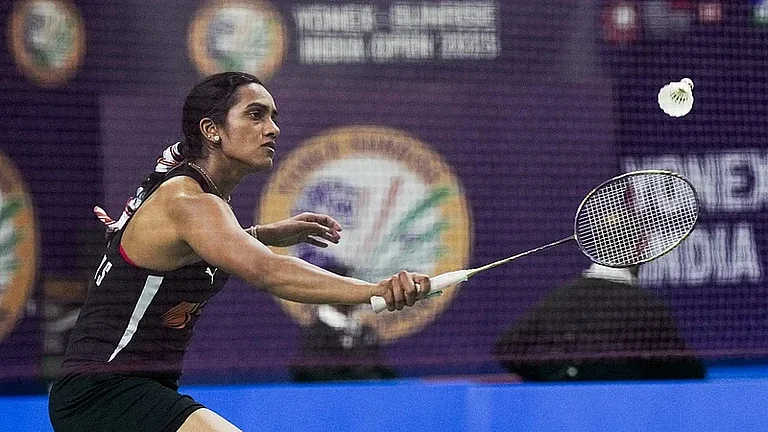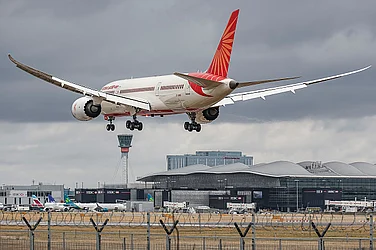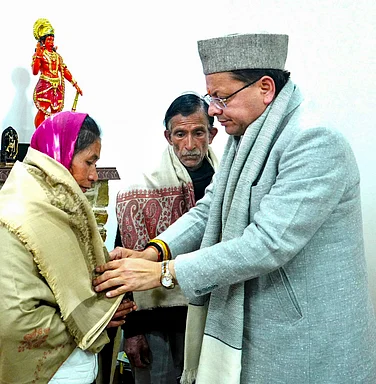When Sushmita Maitra decided to take an hour-long flight from Calcutta to Delhi via Lucknow, she thought that just a normal disruption of flight schedules because of the winter would not be much of a hassle. But the Nairobi-based NRI managed to get on to her flight only nine hours later. Every time she wanted to know the reason for delay, the ground staff had the same answer: "Blinding fog in Delhi". Says Maitra with a grimace: "Throughout the bumpy flight, I prayed to God that he better listen to me because Im closer to you."
All of last week, more than 210 domestic and international flights were disrupted, 250 trains delayed, 20 killed in road accidents and unaccounted for manhours lost. All this because of northern Indias tryst with fog and government apathy.
Train travel has been particularly affected. About 95 per cent of the 850 trains which originate from Delhi, say railway officials, are running late. Says M.G. Arora, executive director, Indian Railways: "Its affecting almost everything. Maintenance is hit because we are working under pressure."
According to Arora, last year, the drivers of the Delhi-Howrah Rajdhani were asked to reduce the speed to 60 kmph (instead of the normal 130 kmph) in case of fog-induced poor visibility. This year, they have, at times, been forced to reduce the speed to less than 30 kmph.
In such conditions, the railways, to begin with, need Rs 80,000 crore. Thats because Rs 50 lakh is required to modernise every kilometre and instal imported lights on signals and locomotives. For the 15,000 km railway network in the northern and eastern regions, which needs to be tackled immediately, the budget runs to a stumping Rs 8,000 crore. Asks a despondent Arora: "Wholl give us this money? Besides, handling the situation is so nerve-wracking that we have never bothered to estimate the losses due to delayed arrival of freight."
The situation is pathetic at the airports too. Avers travel agent Debashish Chatterjee: "All international airlines have rescheduled their flights. And the problem is compounded when airlines like the KLM do not offer hotel facilities in the event of a delay. We have to look for alternate routes which is not possible every time." This, more than six years after the government signed a deal with Raytheon to instal navigation systems for Delhis domestic and international airports and claimed that landing and take-off during times of low visibility would never be a problem again. The Capitals international airport is still not equipped with landing systems which allow aircraft to land when runway visibility is less than 350 metres.
Airports Authority of India (AAI) officials and the ministry of civil aviation continue to proclaim that a more effective instrument landing system (ILS) will become entirely operational in September this year but experts admit it will still not allow landing when visibility drops below 200 metres. The current ILS classified as a category II system (cat II), which became operational on February 14 last year, is now being upgraded to a cat III (a) system.
"There is very little we can do at this point of time. We hope to put the advanced system in place by September this year," Robey Lal, member (operations), AAI, told Outlook, adding, "There were some initial problems after we installed the current equipment but Raytheon officials rectified it and also readied it for upgrading. The ideal situation (which exists in international airports at London and Frankfurt) for northern Indias weather conditions is the cat III (c) system which allows landing even in zero visibility. But then, we neither have the requisite infrastructure nor trained manpower."
Also, says Lal, the upgrade has to be complete in every respect. "Its not just the landing systems. Airline companies in India dont have trained manpower or craft compatible with advanced ILS," he adds.
Experts say that the ILS is a ground-based, pilot-interpreted approach aid providing vital instructions to help the aircraft fly on a predetermined flight path to the beginning of the runway. The pilot descends to a predetermined height and finally decides whether or not to land by visual reference.
Till last winter, Delhis international airport was using the cat I system, which allowed landing only if the runway visibility was over 550 metres. Says Lal: "Modernisation has to be in phases. From cat I we cannot suddenly jump to cat II. All pilots are now in a transition phase, having switched to the cat II system. And though many are acquainted with cat III, only the A320s in IA fleet are equipped to land with cat III system assistance."
Clearly, for the citizens, there is little reprieve in sight. "We need long-term measures to check the severe air pollution in Delhi which adds to the fog and takes much longer to disperse," says Delhi environment minister Anil Walia. Adds Anil Aggarwal of the Centre for Science and Environment: "There is tremendous loss of manhours. All work schedules are going awry because of slow vehicular traffic in Delhi and the neighbouring states. During the winter, atmospheric pollution is a bane as suspended particles continue to hang heavy in the air, thereby adding to the haze." With the weatherman predicting denser fog throughout January, people in northern India will have no other option in the short term than to go through the grind of cancelled, delayed and diverted flights, trains and road traffic.


























